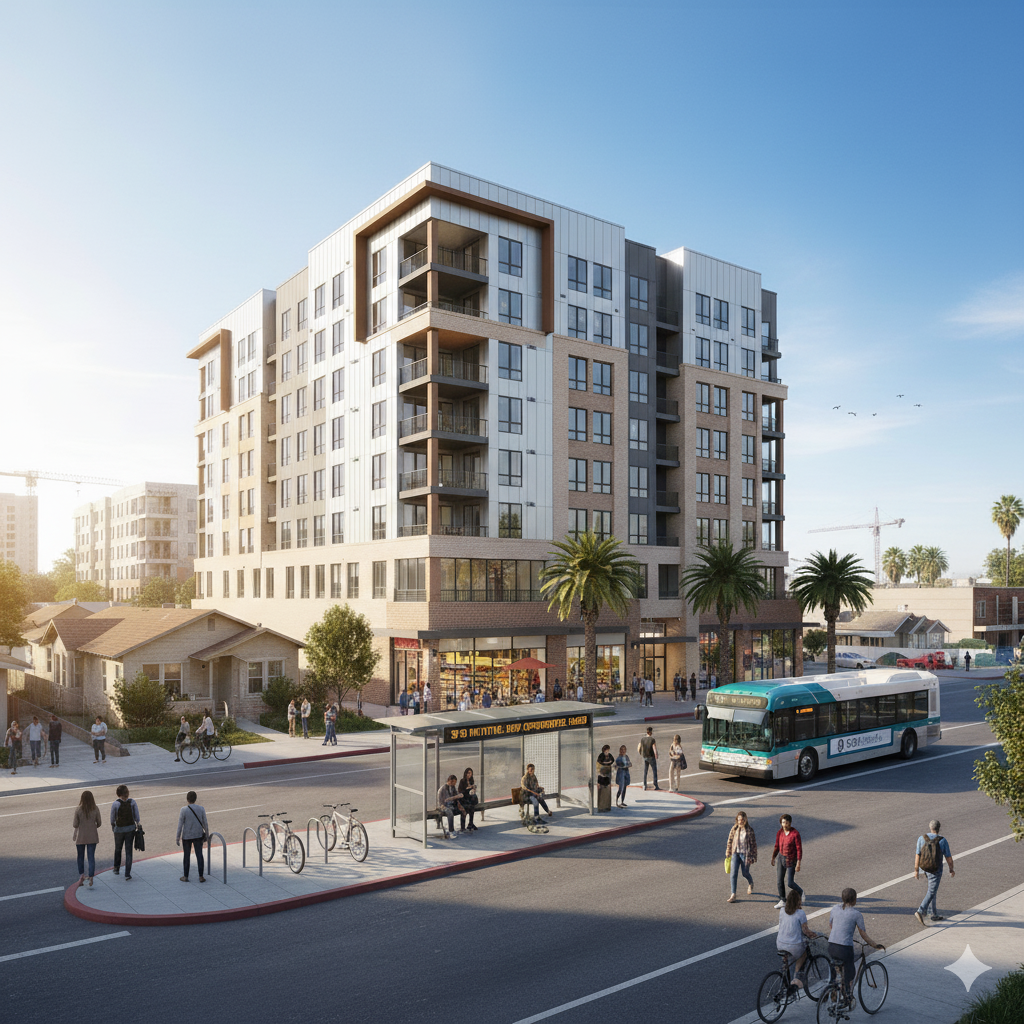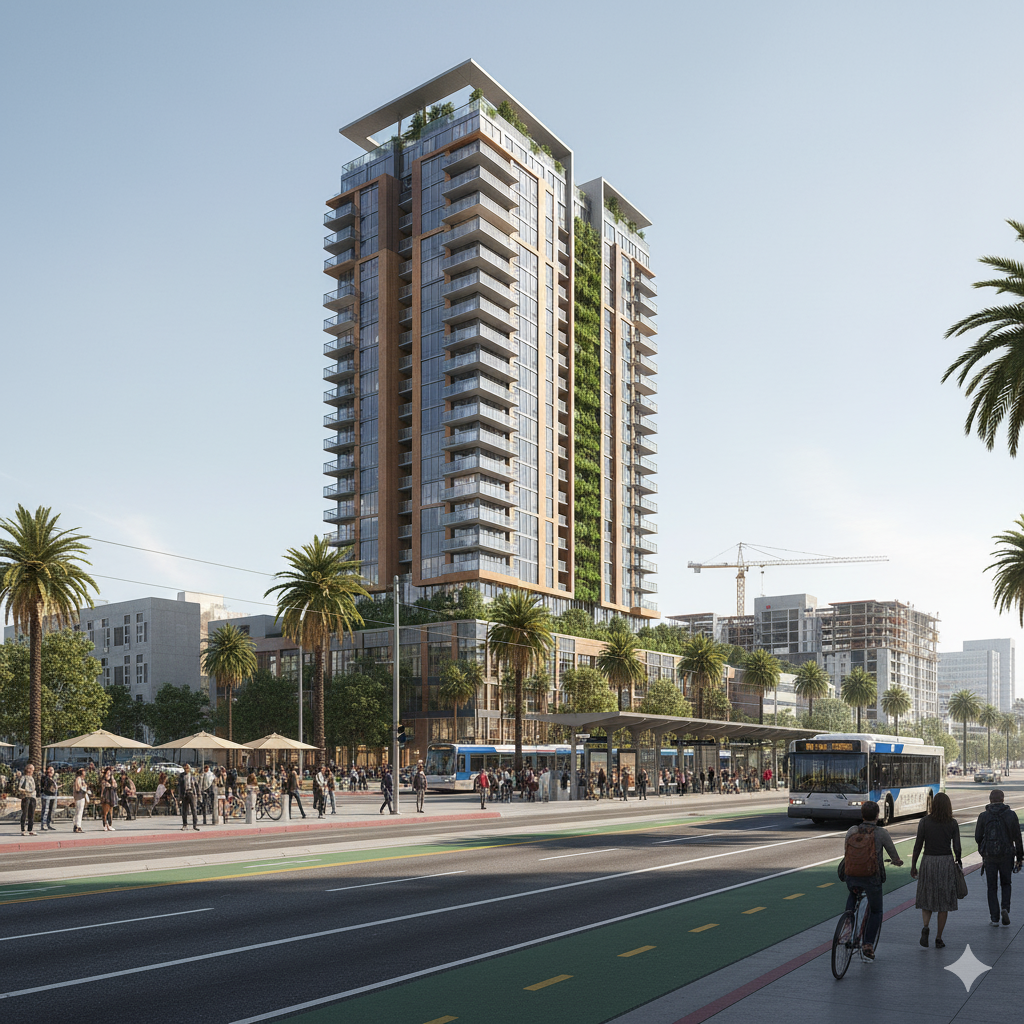SB 79 California Housing: What Buyers and Sellers in L.A. County Need to Know
Question: How could SB 79 change your buying or selling strategy in Los Angeles County?
Quick answer: If signed, SB 79 would upzone areas near rail and rapid bus stops and streamline approvals, likely increasing multifamily construction across transit-rich parts of L.A. County. For you, that could mean new supply, shifting comps, and fresh opportunities (or competition) depending on your timeline and property type.
What SB 79 Would Do (In Plain English)
SB 79—formally, the Abundant & Affordable Homes Near Transit Act—sets a statewide baseline that allows taller, denser housing near major transit stops. It aims to curb delays by enabling ministerial approvals (faster, checklist-based reviews) for qualifying projects, limiting prolonged CEQA fights that often stall construction. Expect more mid- to high-density proposals within walking distance of rail and frequent bus corridors.
For Los Angeles specifically, analyses suggest midrise, mixed-income buildings near rail and BRT could proliferate, complementing (not replacing) existing local programs like TOC. Some reports reference heights up to roughly nine stories in certain contexts, depending on the transit tier and bill details. Final mapping and implementation will clarify where that applies.
Status check: As of October 6, 2025, the bill has passed the Legislature and is on the Governor’s desk. Cities are preparing—and debating—how it could reshape near-transit neighborhoods.
Why This Matters for Buyers
1) More options near transit. If you want proximity to rail or bus rapid transit, SB 79 could expand inventory over time. More new units near job centers may soften competition in specific submarkets once projects deliver.
2) Price dynamics could shift. Increased supply doesn’t move prices overnight, but new product—especially smaller, efficient units—can influence rent and resale comps within micro-neighborhoods. Watch your target blocks, not just citywide stats. (Supply effects are highly local.)
3) Construction near you. If you’re buying close to transit, anticipate more building activity in the medium term. Factor potential noise, viewshed changes, and resale positioning into your due diligence. Local tier maps will help pinpoint where change is most likely.
4) Transit-oriented living upside. Long-run, living near reliable transit can support demand resilience for well-located properties. SB 79’s focus is explicitly transit-oriented, aiming to cluster homes where people can realistically rely on trains and frequent buses.
What This Means for Sellers
1) Timing the market. If you own near a transit stop, SB 79 may raise land and redevelopment interest over time—especially on larger lots or parcels with multifamily potential. Short-term effects vary; some owners may see increased buyer interest from small developers or build-to-rent operators once rules are finalized.
2) Comps will evolve. New buildings can reset neighborhood benchmarks. If more modern units with amenities come online nearby, price-per-foot and buyer expectations can change. Plan your listing prep and pricing strategy accordingly.
3) Understand eligibility and exceptions. Implementation is nuanced—tiers differ by transit type and frequency, and there are carve-outs (e.g., constraints in certain hazard areas or existing protected units). Don’t assume every parcel near a station is greenlit for the same height or density.
Key Debates You’ll Hear (And How They Affect You)
Local control vs. Statewide rules: Cities argue SB 79 overrides zoning. The counterpoint is that a statewide floor is needed to fix persistent housing shortages near transit. As a buyer or seller, expect some friction—and headlines—as cities adapt.
Affordability guarantees: Advocates are split. Supporters see more supply near transit as a step toward affordability; others want deeper affordability requirements to ensure lower-income residents benefit. Your takeaway: affordability rules can affect which projects get built—and when.
Displacement and neighborhood change: Tenant groups and some local leaders worry about indirect displacement and infrastructure strain. Project-level anti-displacement measures and labor standards (like prevailing wage on larger projects) are part of the ongoing negotiation.
How to See If SB 79 Touches Your Block
Use emerging public maps. Outlets and agencies are publishing tools to visualize potential impact areas around stations and frequent bus corridors. Start with the LAist explainer and the City’s SB 79 page; look for tiers (¼–½ mile) and station type.
Cross-check zoning + lot specifics. Parcel-level eligibility can hinge on details (frontage, lot size, overlays, protected units). Confirm with planning staff and updated city guidance once available.
Smart Next Steps (Buyers & Sellers)
Buyers
Identify 2–3 target corridors (current or planned rail/BRT).
Track pipeline projects and upcoming station-area plans that could add supply in your price range.
Lock financing early for speed; ministerial approvals can compress delivery timelines for some projects.
Sellers
Audit your parcel’s potential: lot size, proximity to transit, and any overlays that could boost value.
Consider pre-list inspections and light improvements to compete against newer inventory.
Discuss timing: list ahead of a surge, or position to benefit from increased developer interest.
The Bottom Line for L.A. County
SB 79 California housing policy could usher in a new wave of transit-oriented development across Los Angeles County. For you, it’s less about statewide headlines and more about your address, your goals, and your timeline. With clear due diligence and a local plan, you can navigate the change—and potentially leverage it—whether you’re buying your next place or preparing to sell.
Schedule a Consultation
Curious how SB 79 could affect your specific block, comps, or timing? Schedule a consultation to map your options and build your plan.
Written by Emily Lin, Realtor, Los Angeles County—helping you make confident, strategic moves in a changing market.




